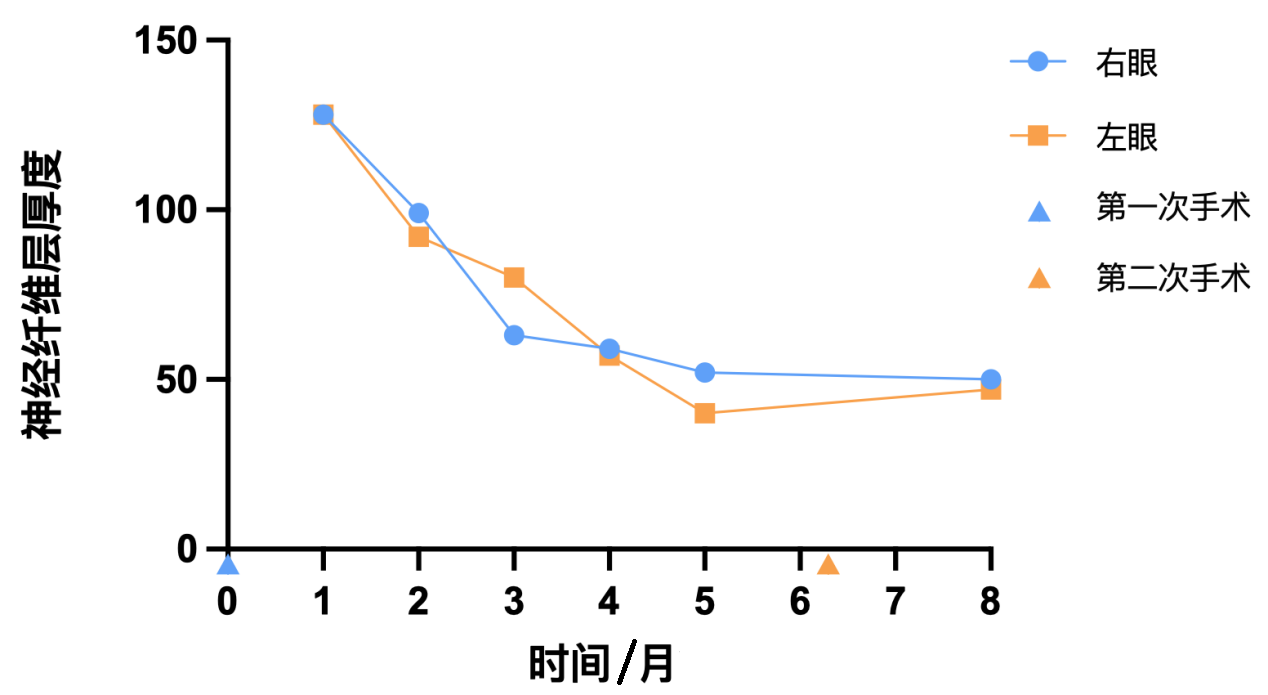1、Correa G G, Amaral L F, Vedolin L M. Neuroimaging of Dandy-Walker malformation: New concepts [J]. Top Magn Reson Imaging, 2011, 22(6): 303-312. DOI: 10.1097/RMR.0b013e3182a2ca77. Correa G G, Amaral L F, Vedolin L M. Neuroimaging of Dandy-Walker malformation: New concepts [J]. Top Magn Reson Imaging, 2011, 22(6): 303-312. DOI: 10.1097/RMR.0b013e3182a2ca77.
2、Spennato P, Mirone G, Nastro A, et al. Hydrocephalus in Dandy–Walker malformation [J]. Childs Nerv Syst, 2011, 27(10): 1665-1681. DOI: 10.1007/s00381-011-1544-4. Spennato P, Mirone G, Nastro A, et al. Hydrocephalus in Dandy–Walker malformation [J]. Childs Nerv Syst, 2011, 27(10): 1665-1681. DOI: 10.1007/s00381-011-1544-4.
3、March W F, Chalkley T H F. Sclerocornea Associated with Dandy-Walker Cyst [J]. Am J Ophthalmol, 1974, 78(1): 54-57. DOI: 10.1016/0002-9394(74)90009-9. March W F, Chalkley T H F. Sclerocornea Associated with Dandy-Walker Cyst [J]. Am J Ophthalmol, 1974, 78(1): 54-57. DOI: 10.1016/0002-9394(74)90009-9.
4、Rusu I, Gupta M P, Patel S N, et al. Retinal vascular nonperfusion in siblings with Dandy-Walker variant [J]. J Am Assoc Pediatr Ophthalmol Strabismus, 2016, 20(2): 174-177. DOI: 10.1016/j.jaapos.2015.11.010. Rusu I, Gupta M P, Patel S N, et al. Retinal vascular nonperfusion in siblings with Dandy-Walker variant [J]. J Am Assoc Pediatr Ophthalmol Strabismus, 2016, 20(2): 174-177. DOI: 10.1016/j.jaapos.2015.11.010.
5、Ebrahimiadib N, Karkheiran S, Roohipoor R, et al. Foveal hypoplasia associated with Dandy-Walker syndrome [J]. Can J Ophthalmol, 2017, 52(4): e125-e127. DOI: 10.1016/j.jcjo.2017.01.020. Ebrahimiadib N, Karkheiran S, Roohipoor R, et al. Foveal hypoplasia associated with Dandy-Walker syndrome [J]. Can J Ophthalmol, 2017, 52(4): e125-e127. DOI: 10.1016/j.jcjo.2017.01.020.
6、Nishant P, Aftab N, Raj A, et al. Adult-onset Dandy–Walker syndrome with atypical ocular manifestations [J]. Can J Ophthalmol, 2023, 58(4): e175-e177. DOI: 10.1016/j.jcjo.2023.01.008. Nishant P, Aftab N, Raj A, et al. Adult-onset Dandy–Walker syndrome with atypical ocular manifestations [J]. Can J Ophthalmol, 2023, 58(4): e175-e177. DOI: 10.1016/j.jcjo.2023.01.008.
7、Smith M. Monitoring Intracranial Pressure in Traumatic Brain Injury [J]. Anesth Analg, 2008, 106(1): 240. DOI: 10.1213/01.ane.0000297296.52006.8e. Smith M. Monitoring Intracranial Pressure in Traumatic Brain Injury [J]. Anesth Analg, 2008, 106(1): 240. DOI: 10.1213/01.ane.0000297296.52006.8e.
8、Marinov M, Gabrovsky S, Undjian S. The Dandy-Walker syndrome: Diagnostic and surgical considerations [J]. Br J Neurosurg, 1991, 5(5): 475-483. DOI: 10.3109/02688699108998476. Marinov M, Gabrovsky S, Undjian S. The Dandy-Walker syndrome: Diagnostic and surgical considerations [J]. Br J Neurosurg, 1991, 5(5): 475-483. DOI: 10.3109/02688699108998476.
9、Lee H J,Phi J H,Kim S K,et al. Papilledema in children with hydrocephalus: incidence and associated factors[J]. J Neurosurg Pediatr,2017,19(6):627-631. DOI: 10.3171/2017.2.PEDS16561. Lee H J,Phi J H,Kim S K,et al. Papilledema in children with hydrocephalus: incidence and associated factors[J]. J Neurosurg Pediatr,2017,19(6):627-631. DOI: 10.3171/2017.2.PEDS16561.
10、Steiner L A, Andrews P J D. Monitoring the injured brain: ICP and CBF [J]. Br J Anaesth, 2006, 97(1): 26-38. DOI: 10.1093/bja/ael110. Steiner L A, Andrews P J D. Monitoring the injured brain: ICP and CBF [J]. Br J Anaesth, 2006, 97(1): 26-38. DOI: 10.1093/bja/ael110.
11、Fischer E G. Dandy-Walker syndrome: an evaluation of surgical treatment [J]. J Neurosurg, 1973, 39(5): 615-621. DOI: 10.3171/jns.1973.39.5.0615. Fischer E G. Dandy-Walker syndrome: an evaluation of surgical treatment [J]. J Neurosurg, 1973, 39(5): 615-621. DOI: 10.3171/jns.1973.39.5.0615.
12、Domingo Z, Peter J. Midline Developmental Abnormalities of the Posterior Fossa: Correlation of Classification with Outcome [J]. Pediatr Neurosurg, 1996, 24(3): 111-118. DOI: 10.1159/000121026. Domingo Z, Peter J. Midline Developmental Abnormalities of the Posterior Fossa: Correlation of Classification with Outcome [J]. Pediatr Neurosurg, 1996, 24(3): 111-118. DOI: 10.1159/000121026.
13、Yengo-Kahn A M, Wellons J C, Hankinson T C, et al. Treatment strategies for hydrocephalus related to Dandy-Walker syndrome: evaluating procedure selection and success within the Hydrocephalus Clinical Research Network [J]. J Neurosurg Pediatr, 2021, 28(1): 93-101. DOI: 10.3171/2020.11.PEDS20806. Yengo-Kahn A M, Wellons J C, Hankinson T C, et al. Treatment strategies for hydrocephalus related to Dandy-Walker syndrome: evaluating procedure selection and success within the Hydrocephalus Clinical Research Network [J]. J Neurosurg Pediatr, 2021, 28(1): 93-101. DOI: 10.3171/2020.11.PEDS20806.
14、Mohanty A, Biswas A, Satish S, et al. Treatment options for Dandy–Walker malformation [J]. J Neurosurg Pediatr, 2006, 105(5): 348-356. DOI: 10.3171/ped.2006.105.5.348. Mohanty A, Biswas A, Satish S, et al. Treatment options for Dandy–Walker malformation [J]. J Neurosurg Pediatr, 2006, 105(5): 348-356. DOI: 10.3171/ped.2006.105.5.348.
15、Lenfeldt N, Koskinen L O D, Bergenheim A T, et al. CSF pressure assessed by lumbar puncture agrees with intracranial pressure [J]. Neurology, 2007, 68(2): 155-158. DOI: 10.1212/01.wnl.0000250270.54587.71. Lenfeldt N, Koskinen L O D, Bergenheim A T, et al. CSF pressure assessed by lumbar puncture agrees with intracranial pressure [J]. Neurology, 2007, 68(2): 155-158. DOI: 10.1212/01.wnl.0000250270.54587.71.
16、Miranda P, Simal J A, Menor F, et al. Initial proximal obstruction of ventriculoperitoneal shunt in patients with preterm-related posthaemorrhagic hydrocephalus [J]. Pediatr Neurosurg, 2011, 47(2): 88-92. DOI: 10.1159/000329622. Miranda P, Simal J A, Menor F, et al. Initial proximal obstruction of ventriculoperitoneal shunt in patients with preterm-related posthaemorrhagic hydrocephalus [J]. Pediatr Neurosurg, 2011, 47(2): 88-92. DOI: 10.1159/000329622.
17、Turhan T, Ersahin Y, Dinc M, et al. Cerebro-spinal fluid shunt revisions, importance of the symptoms and shunt structure [J]. Turk Neurosurg, 2011, 21(1): 66-73Turhan T, Ersahin Y, Dinc M, et al. Cerebro-spinal fluid shunt revisions, importance of the symptoms and shunt structure [J]. Turk Neurosurg, 2011, 21(1): 66-73
18、Garber S T, Riva-Cambrin J, Bishop F S, et al. Comparing fourth ventricle shunt survival after placement via stereotactic transtentorial and suboccipital approaches [J]. J Neurosurg Pediatr, 2013, 11(6): 623-629. DOI: 10.3171/2013.3.PEDS12442. Garber S T, Riva-Cambrin J, Bishop F S, et al. Comparing fourth ventricle shunt survival after placement via stereotactic transtentorial and suboccipital approaches [J]. J Neurosurg Pediatr, 2013, 11(6): 623-629. DOI: 10.3171/2013.3.PEDS12442.
19、Nazir S, O’Brien M, Qureshi N H, et al. Sensitivity of papilledema as a sign of shunt failure in children [J]. J AAPOS. DOI: 10.1016/j.jaapos.2008.08.003. Nazir S, O’Brien M, Qureshi N H, et al. Sensitivity of papilledema as a sign of shunt failure in children [J]. J AAPOS. DOI: 10.1016/j.jaapos.2008.08.003.
20、Massicotte E M, Del Bigio M R. Human arachnoid villi response to subarachnoid hemorrhage: possible relationship to chronic hydrocephalus [J]. J Neurosurg, 1999, 91(1): 80-84. DOI: 10.3171/jns.1999.91.1.0080. Massicotte E M, Del Bigio M R. Human arachnoid villi response to subarachnoid hemorrhage: possible relationship to chronic hydrocephalus [J]. J Neurosurg, 1999, 91(1): 80-84 DOI: 10.3171/jns.1999.91.1.0080.
21、Na%C5%A1el%20C%2C%20Gentzsch%20S%2C%20Heimberger%20K.%20Diffusion-weighted%20magnetic%20resonance%20imaging%20of%20cerebrospinal%20fluid%20in%20patients%20with%20and%20without%20communicating%20hydrocephalus%20%5BJ%5D.%20Acta%20Radiol%2C%202007%2C%2048(7)%3A%20768-773.%20DOI%3A%2010.1016%2Fj.jaapos.2008.08.003.Na%C5%A1el%20C%2C%20Gentzsch%20S%2C%20Heimberger%20K.%20Diffusion-weighted%20magnetic%20resonance%20imaging%20of%20cerebrospinal%20fluid%20in%20patients%20with%20and%20without%20communicating%20hydrocephalus%20%5BJ%5D.%20Acta%20Radiol%2C%202007%2C%2048(7)%3A%20768-773.%20DOI%3A%2010.1016%2Fj.jaapos.2008.08.003.
22、Walsh FB, Hoyt, W.F. Clinical Neuroophthalmology, Third Ed. Baltimore: Williams & Wilkins Co, 1969.Walsh FB, Hoyt, W.F. Clinical Neuroophthalmology, Third Ed. Baltimore: Williams & Wilkins Co, 1969.
23、Wolfla C E,Luerssen T G,Bowman R M. Regional brain tissue pressure gradients created by expanding extradural temporal mass lesion[J]. J Neurosurg,1997,86(3):505-510. DOI: 10.3171/jns.1997.86.3.0505. Wolfla C E,Luerssen T G,Bowman R M. Regional brain tissue pressure gradients created by expanding extradural temporal mass lesion[J]. J Neurosurg,1997,86(3):505-510. DOI: 10.3171/jns.1997.86.3.0505.
24、Rosenwasser R H, Kleiner L I, Krzeminski J P, et al. Intracranial pressure monitoring in the posterior fossa: a preliminary report [J]. J Neurosurg, 1989, 71(4): 503-505. DOI: 10.3171/jns.1989.71.4.0503. Rosenwasser R H, Kleiner L I, Krzeminski J P, et al. Intracranial pressure monitoring in the posterior fossa: a preliminary report [J]. J Neurosurg, 1989, 71(4): 503-505. DOI: 10.3171/jns.1989.71.4.0503.
25、Czosnyka M. Monitoring and interpretation of intracranial pressure [J]. J Neurol Neurosurg Psychiatry, 2004, 75(6): 813-821. DOI: 10.1136/jnnp.2003.033126.Czosnyka M. Monitoring and interpretation of intracranial pressure [J]. J Neurol Neurosurg Psychiatry, 2004, 75(6): 813-821. DOI: 10.1136/jnnp.2003.033126.
26、Kaya%20Tutar%20N%2C%20Kale%20N.%20The%20Relationship%20between%20Lumbar%20Puncture%20Opening%20Pressure%20and%20Retinal%20Nerve%20Fiber%20Layer%20Thickness%20in%20the%20Diagnosis%20of%20Idiopathic%20Intracranial%20Hypertension%3A%20Is%20a%20Lumbar%20Puncture%20Always%20Necessary%3F%20%5BJ%5D.%20The%20Neurologist%2C%202024%2C%2029(2)%3A%2091-95.%20DOI%3A%2010.1097%2FNRL.0000000000000528.%20Kaya%20Tutar%20N%2C%20Kale%20N.%20The%20Relationship%20between%20Lumbar%20Puncture%20Opening%20Pressure%20and%20Retinal%20Nerve%20Fiber%20Layer%20Thickness%20in%20the%20Diagnosis%20of%20Idiopathic%20Intracranial%20Hypertension%3A%20Is%20a%20Lumbar%20Puncture%20Always%20Necessary%3F%20%5BJ%5D.%20The%20Neurologist%2C%202024%2C%2029(2)%3A%2091-95.%20DOI%3A%2010.1097%2FNRL.0000000000000528.%20
27、Taha Najim R, Mybeck L, Andersson S, et al. Thinner peripapillary retinal nerve fibre layer and macular retinal thickness in adolescents with surgically treated hydrocephalus in infancy [J]. Acta Ophthalmol (Copenh), 2022, 100(6): 673-681. DOI: 10.1111/aos.15162. Taha Najim R, Mybeck L, Andersson S, et al. Thinner peripapillary retinal nerve fibre layer and macular retinal thickness in adolescents with surgically treated hydrocephalus in infancy [J]. Acta Ophthalmol (Copenh), 2022, 100(6): 673-681. DOI: 10.1111/aos.15162.
28、Kwapong W R, Cao L, Pan R, et al. Retinal microvascular and structural changes in intracranial hypertension patients correlate with intracranial pressure [J]. CNS Neurosci Ther, 2023, 29(12): 4093-4101. DOI: 10.1111/cns.14298. Kwapong W R, Cao L, Pan R, et al. Retinal microvascular and structural changes in intracranial hypertension patients correlate with intracranial pressure [J]. CNS Neurosci Ther, 2023, 29(12): 4093-4101. DOI: 10.1111/cns.14298.






